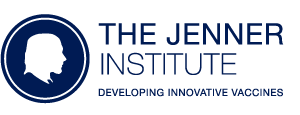Nipah virus vaccines evaluated in pigs as a 'One Health' approach to protect public health.
McLean RK., Pedrera M., Thakur N., Elrefaey AME., Hodgson S., Lowther S., Reid T., Todd S., Rowe B., Bergfeld J., Trinidad L., Riddell S., Edwards S., Payne J., Barr J., Rye N., Bruce M., Poole T., Brown S., Dalziel T., Au G., Fisher M., Layton R., Lambe T., Chappell K., Isaacs A., Watterson D., Mourino M., Raue R., Shanta IS., Siddika A., Begum MN., Rahman S., Bhuyan AAM., Alam M., Rahman MZ., Rahman M., Tchilian E., Gilbert SC., Young P., Bailey D., Marsh GA., Graham SP.
Nipah virus (NiV) causes a severe neurological disease in humans. The first NiV outbreak, in Malaysia, involved pig-to-human transmission, that resulted in significant economic losses to the local pig industry. Despite the risk NiV poses to pig-dense regions, no licensed vaccines exist. This study therefore assessed three NiV vaccine candidates in pigs: (1) adjuvanted soluble NiV (s)G protein, (2) adjuvanted pre-fusion stabilised NiV (mcs)F protein, and (3) adenoviral vectored NiV G (ChAdOx1 NiV G). NiV sG induced the strongest neutralising antibody response, NiV mcsF induced antibodies best able to neutralise cell-cell fusion, whereas ChAdOx1 NiV G elicited CD8+ T-cell responses. Despite differences in immunogenicity, prime-boost immunisation with all candidates conferred a high degree of protection against NiV infection. Follow-up studies demonstrated longevity of immune responses and broadly comparable immune responses in Bangladeshi pigs under field conditions. These studies provide a platform for developing a NiV vaccine for pigs.

